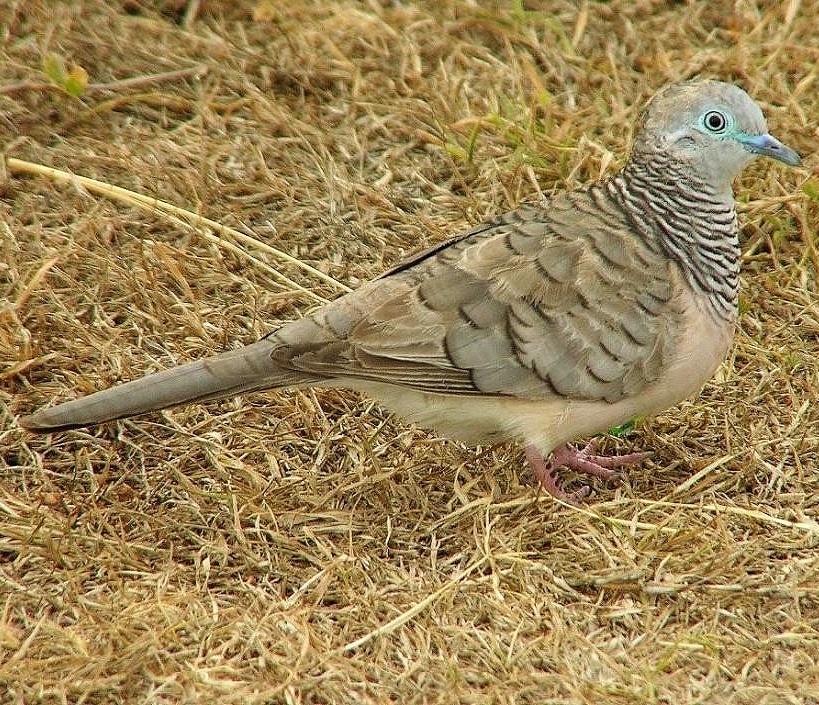 |
| Photo by Guy Poisson (Internet Bird Collection) |
Common name:
peaceful dove (en); rola-plácida (pt); géopélie placide (fr); tortolita plácida (es); friedenstäubchen (de)
Taxonomy:
Order Columbiformes
Family Columbidae
Range:
This species is found throughout most of Australia, except in southern Victoria, southern Western Australia and Tasmania, and also in Papua New Guinea and the nearby Aru islands.
Size:
These birds are 19-22 cm long and weigh 50-60 g.
Habitat:
The peaceful dove is found in dry woodlands and savannas, scrublands with scattered trees, agricultural areas and within urban areas.
Diet:
They mainly feed on the ground, taking small seeds and sometimes small invertebrates. They also approach humans in search of scraps.
Breeding:
Peaceful doves can breed all year round, varying between different areas. The nest is a loose platform of twigs, grasses and rootlets, placed in a tree about 12 m above the ground. The female lays 2 whitish eggs which are incubated for 13-14 days. The chicks are fed crop milk by both parents and fledge 16-17 days after hatching, but only become independent 2 weeks later. Each pair can raise up to 8 broods per year.
Conservation:
IUCN status – LC (Least Concern)
This species has a very large breeding range and, although the global population size has not been quantified, the peaceful dove is reported to be adaptable and widespread. The population is suspected to be stable in the absence of evidence for any declines or substantial threats.







